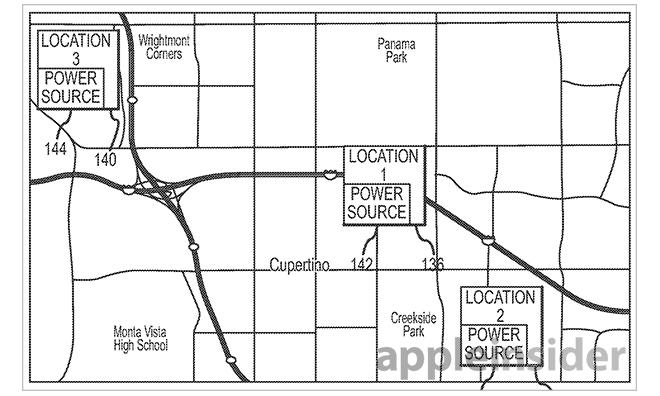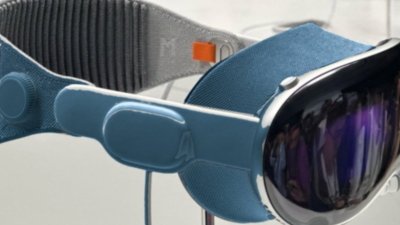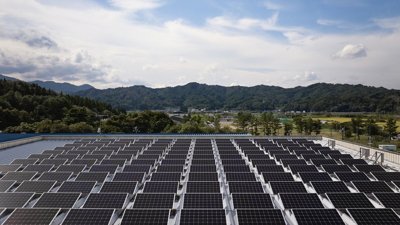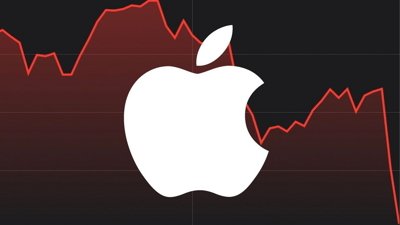The U.S. Patent and Trademark Office on Thursday published an Apple patent application for an intuitive mobile device control system that automatically powers down certain components depending on a user's location and habits, thus maximizing battery life.
In its aptly named application, "Power management for electronic devices," Apple describes a system that detects a mobile device owner's usage patterns, estimates the required energy needed to run the phone between charges, and dynamically turns hardware off or closes running software to achieve maximum battery life. The invention also brings location data into the mix for enhanced efficiency.
According to the document's background, the invention is designed to compensate for power-hungry mobile devices and increased user interaction. As an example, the filing notes a typical user may charge their device before leaving for work, then use GPS navigation, watch videos and make multiple phone calls before having a chance to recharge. While battery drain is not a critical concern for all users at all times, some situations, like traveling, call for a longer lasting phone.
To help reduce power consumption, Apple proposes a system that can compare the estimated time period a user will spend on their device with battery reserves, determining whether the device has sufficient power to last for said period. If the battery does not have sufficient power, the system will adjust "one or more characteristics" to conserve energy.
In one embodiment, the system can store charging locations and corresponding device data by using an on-board GPS radio. Example data can be type of power source, typical charge time, and typical travel time to and from locations. The device then stores the typical charging locations and usage patterns in a database, from which a power management scheme is calculated.
Flowchart of basic power management cycle.From the filing's description:
For example, using a GPS sensor the mobile electronic device may determine, based on its current location, that it may be at least eight hours before the mobile electronic device will be recharged or otherwise connected to an external power source. In this case, the mobile electronic device may modify the power management scheme by adjusting one or more characteristics or settings. In some examples, the mobile electronic device may reduce a data fetching rate (e.g., for email or other data), decrease a display brightness, turn off select applications or prevent those applications from running, and so on.
The power management profile can be dynamically updated depending on usage requirements or location. Users can manually adjust or input charging data into the system, allowing for a certain level of customization.
Finally, the method can also deduce who is using the device based on typical usage patterns. For example, one device user may take a specific route to work, while another may stay at home near a charging location. Based on the selected profile, the system is able to predict usage for a given time period and mete out energy accordingly.
Flowchart of power management cycle with customization options.It is unknown if Apple plans to implement the technology in a future device, but the company's iPhone and iPad lineup is expanding its feature set, while decreasing in physical size. A system that is able to dynamically manage power in an intuitive and effective manner would be a welcome addition to any portable device.
Apple's GPS-enabled power management system patent application was first filed for in 2012 and credits Michael I. Ingrassia, Jr. and Jeffery T. Lee as its inventors.
 Mikey Campbell
Mikey Campbell

-m.jpg)






 Malcolm Owen
Malcolm Owen
 Marko Zivkovic
Marko Zivkovic

 Chip Loder
Chip Loder
 Christine McKee
Christine McKee
 William Gallagher
William Gallagher
 Amber Neely
Amber Neely



-m.jpg)






17 Comments
This one should be easy for Google to copy; they already know Android users' patterns ¡
This one should be easy for Google to copy; they already know Android users' patterns ¡
I would simply have responded to this with - but the message would have been too short, so I'll say this -
This is why the fanboy arguments get so heated..Google doesn't have to copy anything. It already exists . Look it up. "Smart actions". Implemented by Motorola. But of course, until Apple does it, it never really existed..go outside of your bubble every now and then guys..the rest of the tech world is pretty cool too.
[quote name="IQatEdo" url="/t/158689/apple-invention-uses-location-usage-patterns-to-save-iphone-battery-life#post_2367633"]I would simply have responded to this with - :lol: but the message would have been too short, so I'll say this - :lol: :lol: [/quote] I once tried setting my Gmail password to penis, but Google told me it was too short.
[quote name="Jtschultz93" url="/t/158689/apple-invention-uses-location-usage-patterns-to-save-iphone-battery-life#post_2367652"]This is why the fanboy arguments get so heated..Google doesn't have to copy anything. It already exists . Look it up. "Smart actions". Implemented by Motorola. But of course, until Apple does it, it never really existed..go outside of your bubble every now and then guys..the rest of the tech world is pretty cool too.[/quote] I know other tech companies are cool, but I prefer a freezer-burn compared to cool.